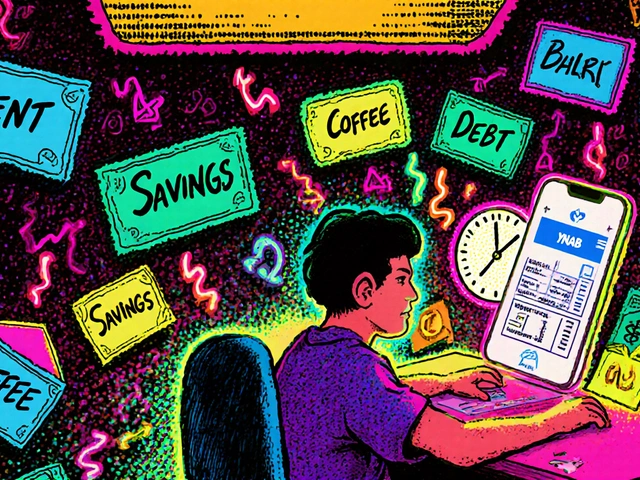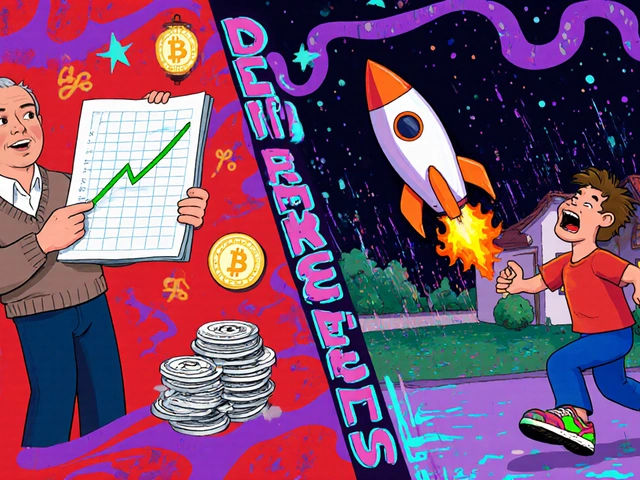International Trading Fee Calculator
Calculate Your International Trading Costs
See exactly how much you'll pay when trading foreign stocks. Input your trade details to compare broker fees and hidden costs.
Why You Need an International Trading Broker
Most people think investing means buying U.S. stocks. But the biggest opportunities aren’t always on Wall Street. In 2025, nearly 37% of U.S. retail investors hold assets outside the U.S.-up from under 30% just five years ago. Why? Because international markets offer better valuations, higher dividends, and exposure to fast-growing economies like India, Vietnam, and Brazil. The S&P 500 trades at a P/E of 27.99. Meanwhile, the MSCI EAFE Index (developed markets outside the U.S. and Canada) sits at 16.28. That’s not a typo. You’re paying nearly half the price for similar earnings overseas. And dividends? International stocks pay 2.97% on average-more than double the 1.32% from U.S. equities.
But buying foreign stocks isn’t as simple as clicking a button. You need a broker that can handle currency conversions, different settlement times, tax forms like W-8BEN, and market holidays in Tokyo, Frankfurt, or São Paulo. Without the right platform, you’ll pay hidden fees, miss trades, or get stuck waiting days for settlements. That’s where international trading brokers come in.
What Makes a Broker Truly Global
Not all brokers that say they offer global access actually do. Some just let you buy American Depositary Receipts (ADRs)-which are U.S.-listed proxies for foreign companies. But ADRs come with extra layers of fees and don’t give you direct ownership. Real international trading means buying shares directly on the London Stock Exchange, Tokyo Stock Exchange, or B3 in Brazil.
True global brokers give you:
- Access to 90+ stock exchanges worldwide
- Trading in 20+ currencies with low conversion fees
- Direct access to local market hours and settlement rules
- Support for foreign tax treaties and W-8BEN forms
- Real-time data from non-U.S. exchanges
Most retail platforms can’t do this. Even big names like Robinhood or SoFi don’t offer direct foreign exchange access. You need a broker built for global markets-not one that added it as an afterthought.
Interactive Brokers: The Powerhouse for Serious Traders
If you want the widest access, Interactive Brokers is still the leader. It connects you to 90+ markets including Hong Kong, South Korea, Australia, and even smaller ones like the Athens Exchange. You can trade stocks, ETFs, options, and futures on nearly every major exchange. It supports 28 currencies, and its automatic currency conversion is among the cheapest-just 0.002% above interbank rates.
Its pricing is brutal for active traders: $0.0035 per share on U.S. stocks, $0.005 per share on international stocks (minimum $1 per order). Options cost $1.25 per contract. If you trade frequently, this saves you thousands compared to flat-fee brokers.
But here’s the catch: the platform is complex. The interface is built for professionals, not beginners. You’ll need to learn how to set up multi-currency sub-accounts, navigate different settlement cycles (T+1 in Australia, T+5 in Thailand), and understand which markets close early or have odd trading hours. One Reddit user spent two weeks just figuring out how to buy Korean stocks before making their first trade.
It’s not for everyone. But if you’re serious about global diversification and trade often, nothing else comes close.
Charles Schwab: Best for Customer Service and Simplicity
If you want help when things get confusing, Charles Schwab is your best bet. It doesn’t have the most markets-only 30 countries through its main account-but its Schwab Global account gives you direct access to 12 major markets: the U.K., Germany, France, Japan, Hong Kong, and more. You can trade in local currencies without converting to USD first.
Schwab’s customer service is legendary. Users report international specialists who know exactly how Japanese market holidays affect settlement. One investor traded Toyota stock and got real-time help on dividend withholding taxes. Their research tools are also top-tier, with access to Morningstar and S&P Global data on foreign companies.
But you pay for it. Schwab charges $4.95 per trade for international stocks plus $0.005 per share. That’s expensive if you’re buying small amounts. And if you want access to emerging markets like India or Brazil, you’re out of luck-they don’t offer direct access there yet.
Best for: Investors who want reliability, research, and human support over raw access.
Fidelity: The Balanced Choice for Beginners
Fidelity strikes a sweet spot. It offers access to 25 countries, including Canada, the U.K., Japan, and Australia. You can trade in local currencies or U.S. dollars. No account minimums. And it’s one of the few brokers that lets you buy international ETFs like Vanguard FTSE All-World ex-US (VEU) with $0 commissions.
Its research tools are strong. Since August 2025, Fidelity has integrated MSCI ESG ratings into every international stock profile, helping you avoid companies with poor environmental or governance practices. It’s also one of the few that shows you exactly how much foreign tax is withheld on dividends.
Its pricing is similar to Schwab: $4.95 per trade plus $0.005 per share. Currency conversion is limited to 16 currencies-fewer than Interactive Brokers. But for most casual investors, 25 countries is more than enough.
Best for: Beginners who want simplicity, strong research, and no account minimums.
TradeStation: For Active Traders Who Love Charts
TradeStation doesn’t run its own global trading system. It partners with Interactive Brokers. That means you get access to 343 markets-including some tiny ones like the Kazakhstan Stock Exchange. If you’re an active trader who uses advanced charting tools, this is a big win. You can backtest strategies across global markets using TradeStation’s powerful platform.
But there’s a downside. You have to manage two separate accounts: one for U.S. trades, one for international. That causes delays in settlement and confusion over which funds are where. Users on Elite Trader forums complain about orders getting stuck because the system doesn’t sync properly.
Also, TradeStation lacks dedicated international research. You won’t find company-specific reports or tax guides like you do with Schwab or Fidelity.
Best for: Active traders already using TradeStation’s charting tools who want expanded global access without switching platforms.
Hidden Costs You Can’t Ignore
Most people focus on trading commissions. But the real money drain comes from hidden fees.
- Currency conversion fees: Even brokers that say “no fee” add 0.002%-0.1% above the interbank rate. That adds up. A $10,000 trade in euros could cost you $10-$100 extra.
- Foreign withholding taxes: Many countries tax dividends before they reach you. The U.S. has tax treaties with 65 countries, which reduce rates-but you must file Form W-8BEN. If you don’t, you could pay 30% instead of 15%.
- Order routing conflicts: Some brokers get paid by market makers to route your orders. This can lead to worse prices. The SEC warned in 2024 that this practice is common in international trading.
- Settlement delays: In the U.S., trades settle in one day (T+1). In Thailand, it’s T+5. If you sell a stock on Friday, you might not get your cash until next Wednesday.
Dr. Jane Smith, chief economist at Global Financial Analytics, says these hidden costs can eat up 1-2% of your returns every year. That’s the same as losing a full percentage point of gains-just from fees and delays.

Who Should Use Which Broker
Here’s how to pick:
- Choose Interactive Brokers if you trade frequently, need access to 90+ markets, and don’t mind a steep learning curve. You’ll save on fees and get the broadest access.
- Choose Charles Schwab if you want help. Their customer service is unmatched. Great for retirees or investors who don’t want to manage complex setups.
- Choose Fidelity if you’re new to international investing. No minimums, good research, and solid support. Perfect for building a global portfolio slowly.
- Choose TradeStation only if you already use it for U.S. trading and want to add global markets without switching platforms.
Don’t overcomplicate it. Start with one or two countries you’re interested in. Maybe Japan for tech or Germany for manufacturing. Build from there.
What’s Next for Global Investing
The global stockbroking market is projected to hit $127.8 billion by 2032-more than triple its 2022 size. Retail investors are driving this growth. More people under 45 are holding foreign stocks than ever before.
Brokers are responding. Interactive Brokers just launched real-time currency hedging tools in October 2025. Schwab expanded to 15 new emerging markets in Q3. Fidelity added ESG ratings. And J.P. Morgan predicts consolidation: smaller brokers will vanish as compliance costs rise across 195+ jurisdictions.
AI tools are coming, too. McKinsey forecasts AI-driven currency risk tools will cut hidden costs by 40-60 basis points by 2027. That means less erosion from exchange rate swings.
But the biggest barrier isn’t technology-it’s regulation. The EU’s new MiCA rules, China’s QFII limits, and India’s foreign ownership caps make global investing more complex than ever. The dream of seamless cross-border trading? Still years away.
How to Get Started
Follow these steps:
- Decide which countries you want to invest in. Start with one or two.
- Check which broker offers direct access to those markets (not just ADRs).
- Compare fees: trading commissions + currency conversion + settlement delays.
- Apply for your account. Be ready to fill out a W-8BEN form.
- Start small. Buy one foreign ETF or one stock. Learn how the settlement works.
- Track foreign dividend taxes. Use tools like Fidelity’s or Schwab’s tax summaries.
Don’t try to do everything at once. International investing isn’t about chasing every market. It’s about finding the right ones-and having the right tools to hold them.






Comments
I started with Fidelity last year to buy some Indian ETFs through their global access. Didn’t know W-8BEN was a thing until I got hit with 30% withholding. Took me 3 weeks to file it right. Now I get 15% like I should. Small win, but huge for dividends. 🙌
The part about settlement times really hit home. I bought a German stock last month and didn’t get my cash for 5 days. Thought my broker froze it. Turned out it was just T+3 in Frankfurt + weekend delays. Fidelity’s tax summary tool saved me from panic. Honestly, if you’re not tracking foreign withholding, you’re leaving money on the table. Just... do the form.
Look, IBKR is the only game in town if you’re doing anything beyond passive ETFs. The currency conversion fee is negligible-0.002% above interbank is basically free. But the real edge is the direct market access. I’ve traded on the B3, KRX, and ASX all in one session. No ADRs, no middlemen, no bid-ask slippage from proxy listings. The UI is a war room, sure-but once you get your multi-currency sub-accounts dialed in, it’s like having a global trading desk in your pocket. And yeah, T+5 in Thailand? Brutal. But that’s the market, not the broker. If you’re gonna play global, you gotta play by their rules. AI hedging tools coming in 2027? That’ll be the real game-changer. Until then, just file W-8BEN, track your settlement cycles, and stop worrying about the $4.95 trades. They’re not the cost-it’s the missed opportunities from not being direct that kill you.